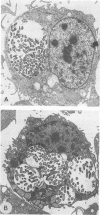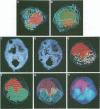Abstract
Previous examination of thin sections of L929 cells heavily infected with the Q fever Priscilla isolate by conventional transmission electron microscopy indicated that the rickettsiae resided within multiple vacuoles. The present study using high-voltage electron microscopy and three-dimensional reconstruction revealed that, in heavily infected cells, the rickettsiae, in fact, reside in one multilobed vacuole. As a result of asymmetric cell division, the multilobed vacuole containing the rickettsiae apparently segregates into one daughter cell, while the companion daughter cell emerges parasite free. This likely explains the appearance of naive uninfected cells in long-term-infected (i.e., ca. 2 years) cell populations that had not been supplemented with uninfected L929 host cells.
Full text
PDF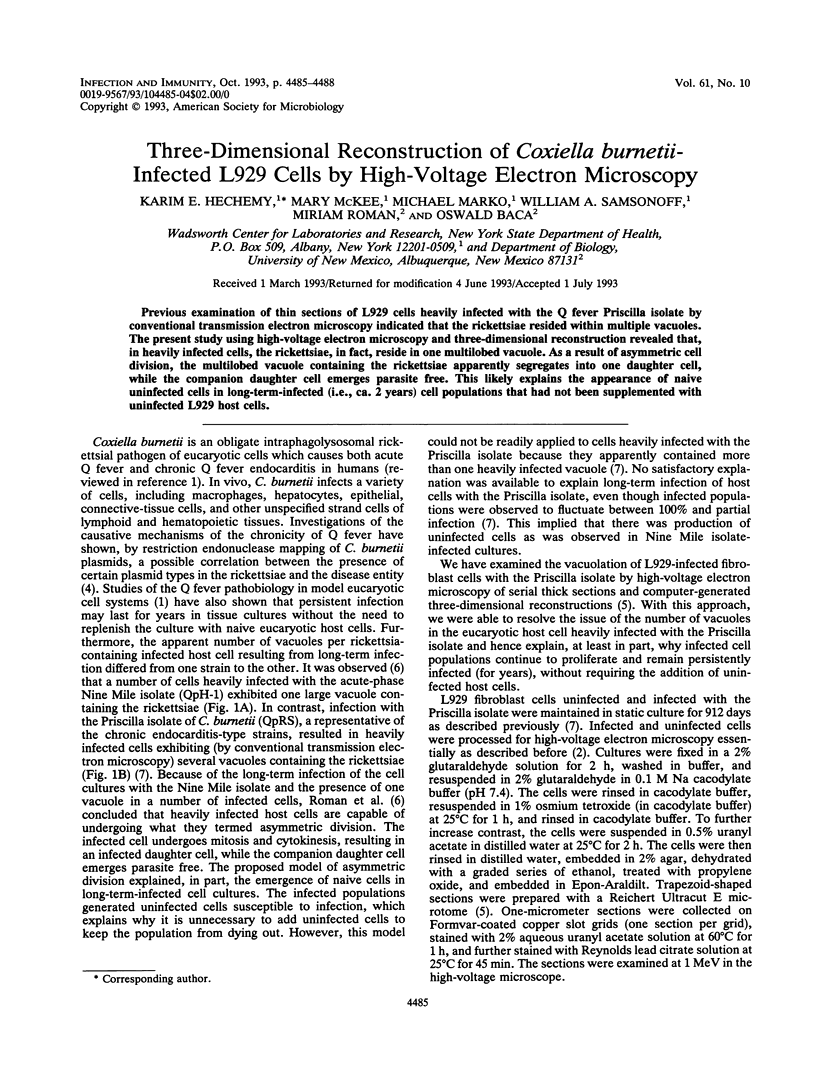
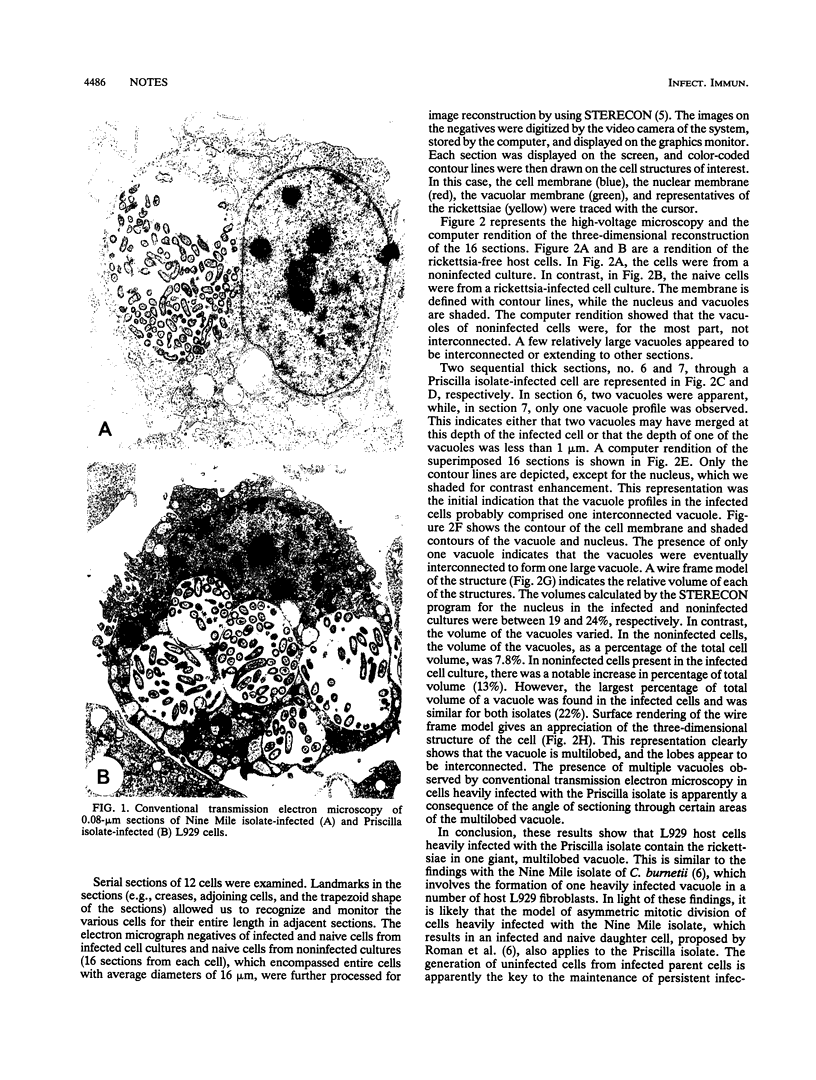
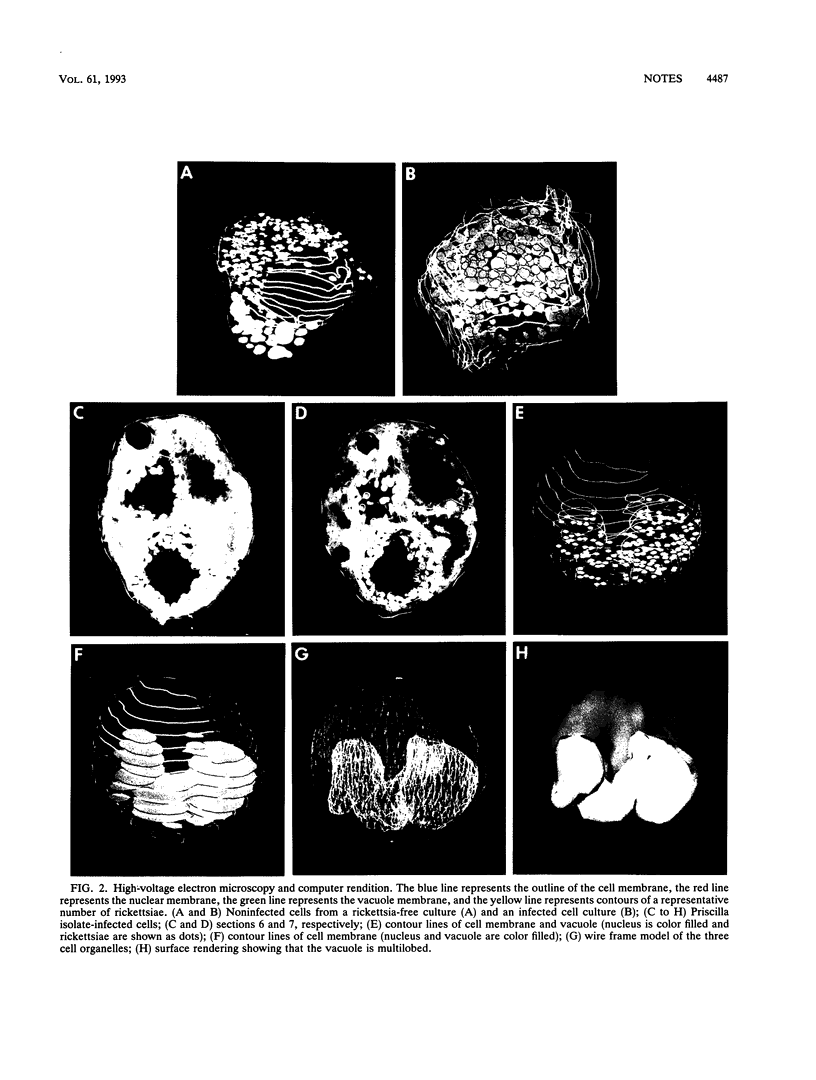
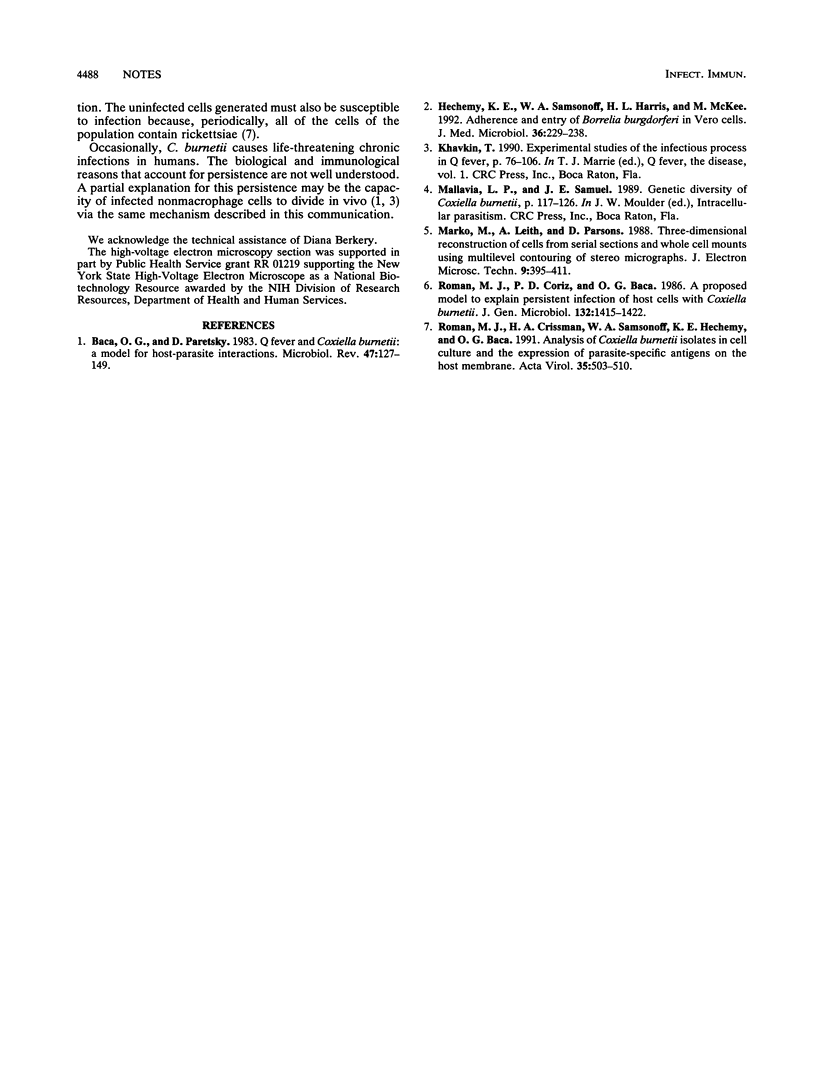
Images in this article
Selected References
These references are in PubMed. This may not be the complete list of references from this article.
- Baca O. G., Paretsky D. Q fever and Coxiella burnetii: a model for host-parasite interactions. Microbiol Rev. 1983 Jun;47(2):127–149. doi: 10.1128/mr.47.2.127-149.1983. [DOI] [PMC free article] [PubMed] [Google Scholar]
- Hechemy K. E., Samsonoff W. A., Harris H. L., McKee M. Adherence and entry of Borrelia burgdorferi in Vero cells. J Med Microbiol. 1992 Apr;36(4):229–238. doi: 10.1099/00222615-36-4-229. [DOI] [PubMed] [Google Scholar]
- Marko M., Leith A., Parsons D. Three-dimensional reconstruction of cells from serial sections and whole-cell mounts using multilevel contouring of stereo micrographs. J Electron Microsc Tech. 1988 Aug;9(4):395–411. doi: 10.1002/jemt.1060090406. [DOI] [PubMed] [Google Scholar]
- Roman M. J., Coriz P. D., Baca O. G. A proposed model to explain persistent infection of host cells with Coxiella burnetii. J Gen Microbiol. 1986 May;132(5):1415–1422. doi: 10.1099/00221287-132-5-1415. [DOI] [PubMed] [Google Scholar]
- Roman M. J., Crissman H. A., Samsonoff W. A., Hechemy K. E., Baca O. G. Analysis of Coxiella burnetii isolates in cell culture and the expression of parasite-specific antigens on the host membrane surface. Acta Virol. 1991 Nov;35(6):503–510. [PubMed] [Google Scholar]



